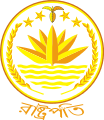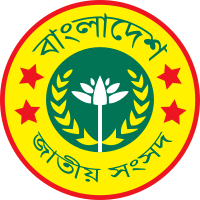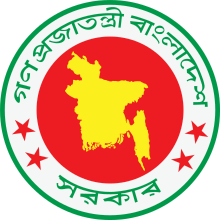Bengali nationalism
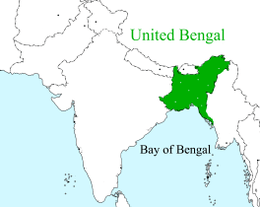
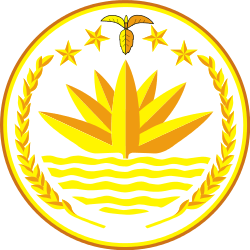 |
|---|
| This article is part of a series on the politics and government of Bangladesh |
|
Constitution and law |
|
|
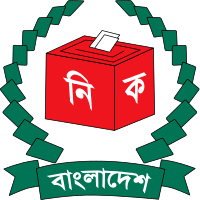 |
| Part of a series on |
| Bengalis |
|---|
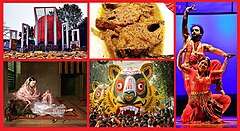 |
|
Bengali homeland |
|
Bengali nationalism (Bengali: বাঙালি জাতীয়তাবাদ) is one of the four fundamental principles according to the original Constitution of Bangladesh.[1] It was the main driving force behind the creation of the Independent nation state of Bangladesh through the 1971 liberation war.[2] The people of Bengali ethnicity speak Bengali Language.[3] Apart from Bangladesh, people of Bengali ethnicity live across the Indian states of West Bengal, Tripura, Assam and some parts of Jharkhand known as united Bengal during the British period. After the 19th century's Bengal Renaissance occurred in Bengal, it then was the four decades long Bengali Nationalist Movement that shook the region which included the Bengali Language Movement, the Bangladesh Liberation War and the creation of Bangladesh in 1971.[4][2]
History
19th century
Bengali nationalism is rooted in the expression of pride in the history and cultural heritage of Bengal. In what is described as the Bengal Renaissance, the introduction of Western culture, science and education led to a major transformation and development of Bengali society. Bengal became a centre of modern culture, intellectual and scientific activities, politics and education under British Raj.
The first social and religious reform movements such as the Brahmo Samaj and Ramakrishna Mission arose in Bengal, as did national leaders and reformers such as Raja Ram Mohan Roy, Sri Aurobindo, Ramakrishna Paramhansa and Swami Vivekananda. Bengali literature, poetry, religion, science and philosophy underwent a massive expansion with the works of Bankim Chandra Chatterjee, Debendranath Tagore, Michael Madhusudan Dutt, Sharat Chandra Chattopadhyay, Rabindranath Tagore, Satyendra Nath Bose, Jagdish Chandra Bose and Kazi Nazrul Islam.
The Young Bengal, and Jugantar movements and newspapers like Amrita Bazar Patrika led the intellectual development of India. The Calcutta-based Indian National Association and the British Indian Association were the earliest political organisations in India.
Partition of Bengal (1905)
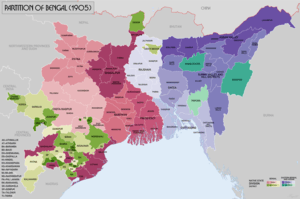
The first Bengali nationalist agitation emerged over the 1905 Partition of Bengal by British authorities.[5][6] Although the partition was supported by Bengali Muslims, a large majority of Bengalis protested the partition and participated in civil disobedience campaigns such as the Swadeshi movement and mass boycott of European goods. Seeking a united Bengal and rejecting British hegemony, Bengalis also spearheaded an emerging revolutionary movement, which assumed a central role in the national independence struggle.
It was during this time the Mother Bengal was an immensely popular theme in Bengali patriotic songs and poems and was mentioned in several of them, such as the song ″Dhana Dhanya Pushpa Bhara″ and ″Banga Amar Janani Amar″ (Our Bengal Our Mother) by Dwijendralal Ray. Rabindranath Tagore wrote Banglar Mati Banglar Joland Amar Sonar Bangla, the national anthem of modern Bangladesh as a rallying cry for proponents of annulment of Partition.[7] These songs were meant to rekindle the unified spirit of Bengal, to raise public consciousness against the communal political divide.
Bengal became a strong base of the Indian struggle for independence, giving rise to national political leaders such as Bipin Chandra Pal, Khwaja Salimullah, Chittaranjan Das, Maulana Azad, Subhas Chandra Bose, his brother Sarat Chandra Bose, Syama Prasad Mookerjee, A. K. Fazlul Huq, Huseyn Shaheed Suhrawardy – the latter two would become important leaders of the Pakistan movement.
United Bengal Proposal
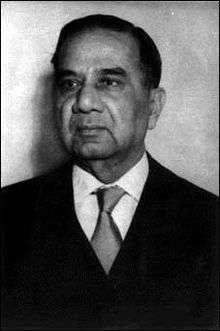
As the Hindu-Muslim conflict escalated and the demand for a separate Muslim state of Pakistan became popular amongst Indian Muslims, the partition of India on communal lines was deemed inevitable by mid-1947. To prevent the inclusion of Hindu-majority districts of Punjab and Bengal in a Muslim Pakistan, the Indian National Congress and the Hindu Mahasabha sought the partition of these provinces on communal lines. Bengali nationalists such as Sarat Chandra Bose, Huseyn Shaheed Suhrawardy, Kiran Shankar Roy, and Abul Hashim sought to counter partition proposals with the demand for a united and independent state of Bengal.[8] Ideological visions for a "Greater Bengal" also included the regions of Assam and districts of Bihar.
Suhrawardy and Bose sought the formation of a coalition government between Bengali Congress and the Bengal Provincial Muslim League. Proponents of the plan urged the masses to reject communal divisions and uphold the vision of a united Bengal. In a press conference held in Delhi on 27 April 1947 Suhrawardy presented his plan for a united and independent Bengal and Abul Hashim issued a similar statement in Calcutta on 29 April. A few days later, Sarat Chandra Bose put forward his proposals for a "Sovereign Socialist Republic of Bengal." With the support of the British governor of the Bengal province, Frederick Burrows, Bengali leaders issued the formal proposal on 20 May.[8]
The Muslim League and the Congress issued statements rejecting the notion of an independent Bengal on 28 May and 1 June respectively. The Hindu Mahasabha also agitated against the inclusion of Hindu-majority areas in a Muslim-majority Bengal, while Bengali Muslim leader Khawaja Nazimuddin and Maulana Akram Khan sought the exclusion of Hindu-majority areas to establish a homogenous Muslim Pakistan. Amidst aggravating Hindu-Muslim tensions, on 3 June British viceroy Lord Louis Mountbatten announced plans to partition India and consequently Punjab and Bengal on communal lines, burying the demand for an independent Bengal.[8]
Partition of Bengal (1947)
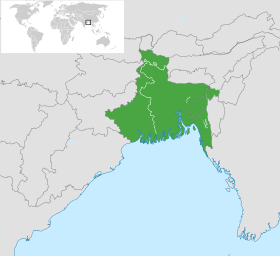
In 1947, in line with the Partition of India, Bengal was partitioned between the Hindu majority west and Muslim majority East. East Bengal became part of the Islamic state of Pakistan while West Bengal became part of the Republic of India.
Bengali nationalism in Pakistan
Bengali Language movement
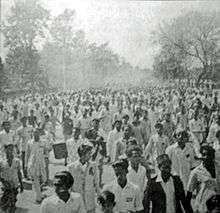
The Language movement was a political and cultural agitation in East Pakistan that centred on the recognition of the Bengali language as an official language of Pakistan and a broader reaffirmation of the ethno-national consciousness of the Bengali people. Discontent against Pakistan's "Urdu-only" policy had spilled into mass agitation since 1948 and reached its climactic strength after police fired upon and killed student demonstrators on 21 February 1952.
After the creation of Pakistan in 1947, the central government under Muhammad Ali Jinnah ordained Urdu to be the sole national language, even though the Bengali-speaking peoples formed a majority of the national population. He did so because Urdu was a neutral language – it was not the mother tongue of any one of Pakistan's ethnicities. The policy, compounded by sectional tensions served as a major provocation of political conflict. Despite protests in 1948, the policy was enshrined into law and reaffirmed by national leaders, including several Bengali politicians.
Facing rising tensions, the government in East Pakistan outlawed public meetings and gatherings. Defying this, the students of Dhaka University and other political activists started a procession on 21 February. Near the current Dhaka Medical College Hospital, police fired on the protesters and numerous protesters, including Abdus Salam, Rafiq Uddin Ahmed, Abul Barkat, and Abdul Jabbar were killed.
The deaths of the students served to provoke widespread strikes and protests led mainly by Bengali political parties such as the Awami League (then Awami Muslim League). The central government relented, granting official status for Bengali.[9] The Language movement served as a catalyst for the assertion of the Bengali cultural and national identity within Pakistan.
Creation of Bangladesh
.svg.png)
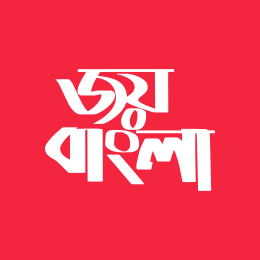
The Language movement and its fallout had created substantial cultural and political animosity between the two wings of Pakistan. Despite constituting a majority of the Pakistani population, Bengalis constituted a small part of Pakistan's military, police and civil services. Ethnic and socio economic discrimination against Bengali people aggravated and agitations arose in East Pakistan over sectional bias, neglect and insufficient allocation of resources and national wealth.
Steeped in Perso-Arabic culture, West Pakistanis saw Bengali culture as too closely associated with Hindu culture. One of the first groups demanding the independence of East Pakistan was the Shadhin Bangla Biplobi Porishad (Free Bengal Revolutionary Council). Under Sheikh Mujibur Rahman, the Awami League became more secular in character, changing its name from Awami Muslim League to just Awami League. and launched the Six point movement demanding substantial political, administrative and economic autonomy for East Pakistan.
Seeking democracy, a separate currency and balanced sharing of wealth and resources, Mujib also sought the recognition of the term "Bangla-desh" to describe the eastern wing of Pakistan, instead of East Pakistan, thus emphasising the Bengali Identity of the people of East Pakistan. Mujib was arrested by Pakistani forces in 1966 and tried for treason in what became the Agartala Conspiracy Case. Following violent protests and disorder, Mujib was released in 1968. In the elections of 1970, the Awami League won an outright majority in the Parliament of Pakistan. When Pakistan's president Yahya Khan and West Pakistani politician Zulfikar Ali Bhutto resisted Mujib's claim to form the government, sectional hostility escalated significantly.
Before his arrest on the night of 25 March 1971, Mujib issued a call for Bengalis to fight for their independence; the message was conveyed over Shadhin Bangla Betar Kendro by Major Ziaur Rahman on 27 March and the independent state of Bangladesh was officially declared by the Awami League's government-in-exile in Mujibnagar. Mujib's trademark "Joy Bangla" (Victory to Bengal) salute became the rallying cry of Bengali nationalists, who mobilised to form the Mukti Bahini guerrilla force, which received training and equipment from the Indian government. Indian intervention at the height of the liberation war would eventually lead to the surrender of Pakistani forces and the establishment of the Bangladeshi state on 16 December.
Bangladeshi nationalism
Symbols
- Bangamata or Mother Bengal, national personification of Bengal.
- Vande Mataram, An Ode to Mother Bengal (Bangamata) by Bankim Chandra Chattopadhyay
- Banga Amar Janani Amar, An Ode to Mother Bengal by Dwijendralal Ray
- Bangamata (poem), by Rabindranath Tagore
- Amar Sonar Bangla, An Ode to Mother Bengal by Rabindranath Tagore in 1905
- Bangladesh, An Ode to Mother Bengal by Kazi Nazrul Islam[10]
- Aaji Bangladesher Hridoy, An Ode to Mother Bengal by Rabindranath Tagore
References
- ↑ "9.Nationalism". bdlaws.minlaw.gov.bd. Constitution of Bangladesh. Retrieved 2017-12-25.
- 1 2 Schuman, Howard (1972). "A Note on the Rapid Rise of Mass Bengali Nationalism in East Pakistan". American Journal of Sociology. 78 (2): 290–298. JSTOR 2776497.
- ↑ "Encyclopedia articles about Bengali". www.encyclopedia.com. Retrieved 2017-12-25.
- ↑ Asahabur Rahman (2017-12-17). "Partition, 1947—Whodunnit?". The Daily Star. Retrieved 2017-12-25.
- ↑ John R. McLane, "The Decision to Partition Bengal in 1905," Indian Economic and Social History Review, July 1965, 2#3, pp 221–237
- ↑ "Partition of Bengal". Encyclopædia Britannica. Retrieved 2017-08-18.
- ↑ The heritage of Bangla patriotic songs
- 1 2 3 Craig Baxter (1997). Bangladesh: From a Nation to a State. Westview Press. p. 56. ISBN 0-8133-2854-3.
Some Bengalis had a different plan: a third unit to be carved out of India that would include a united and independent Bengal. Congress leader Sarat Chandra Bose opposed the possible division of Bengal ... He was joined by other members of the Congress, including Kiran Shankar Roy. In time, Suhrawardy and Abul Hashem and others who were allied with them took up the cause ... On May 20, 1947, Abul Hashem and Sarat Bose signed an agreement spelling out the terms for an independent Bengal ... The British statement of June 3 that provided for the division of both Bengal and the Punjab provided the practical end to the fantasy of a united Bengal.
- ↑ Craig Baxter (1997). Bangladesh: From a Nation to a State. Westview Press. p. 63. ISBN 0-8133-2854-3.
The [21 February] event affected the debate in the Constituent Assembly ... [they] decided in September 1954 that 'Urdu and Bengali and such other languages as may be declared' would be 'the official languages of the Republic.'
- ↑ "বাংলাদেশ". 9 June 2014.
- M. Ahmed, Era of Sheikh Mujibur Rahman (1983), University Press
- Cyriac Maprayil, Bangabandhu Sheikh Mujibur Rahman (2001) ISBN 81-7510-121-0
- Anthony Mascarenhas, Bangladesh: A Legacy of Blood ISBN 0-340-39420-X
- Mahua Sarkar, Visible Histories, Disappearing Women: Producing Muslim Womanhood in Late Colonial Bengal, (2008) Durham, NC: Duke University Press.
- Nitish Sengupta, History of the Bengali-speaking People ISBN 81-7476-355-4
External links
- Copf, David (2012). "Bengal Renaissance". In Islam, Sirajul; Jamal, Ahmed A. Banglapedia: National Encyclopedia of Bangladesh (Second ed.). Asiatic Society of Bangladesh.
- Misra, Chitta Ranjan (2012). "United Independent Bengal Movement". In Islam, Sirajul; Jamal, Ahmed A. Banglapedia: National Encyclopedia of Bangladesh (Second ed.). Asiatic Society of Bangladesh.
- Sheren, Syeda Momtaz (2012). "War of Liberation, The". In Islam, Sirajul; Jamal, Ahmed A. Banglapedia: National Encyclopedia of Bangladesh (Second ed.). Asiatic Society of Bangladesh.
- Indo-Bangladesh standoff
- Indo-Bangladesh migration matrix
- Intellectuals move to foil design
